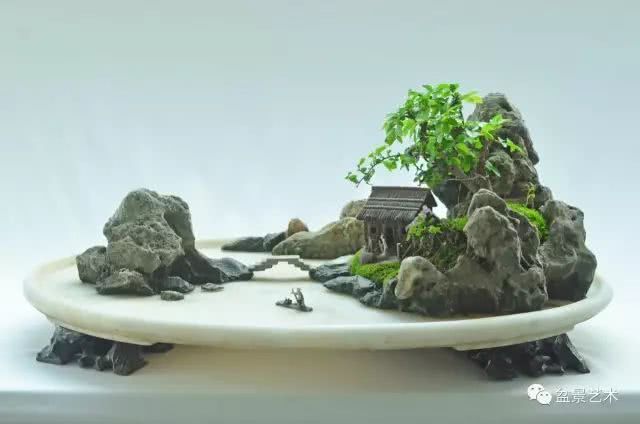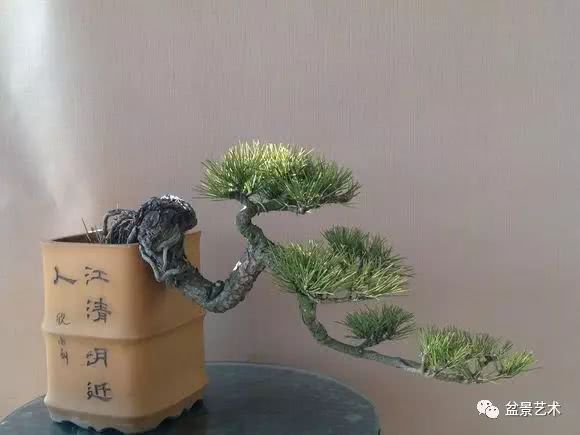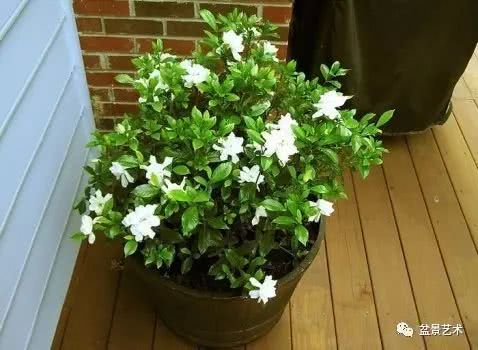A wonderful way to bond bonsai mountains and rocks

In the process of making landscape bonsai, due to the requirements of landscape performance rock layout and rock volume, it is often necessary to properly bond several, more than ten or even dozens of smaller stones together to form a single peak and mountains with overlapping peaks.
Generally speaking, the bonding of rocks can be divided into two categories, one is to bond several pieces of small stones with poor shape from top to bottom or a small amount from left to right to form the main bee and the bee in the landscape bonsai, which is mostly used in the landscape bonsai of close-range landscape; The other is to bond multiple stones with a certain landscape together on the same horizontal plane to form a group of distant mountains landscape, which is mostly related to the layout of rocks and the performance of prospects.
Bonding stone cement (gray, white two), epoxy resin, 307 - 1 unsaturated polyester resin. From the perspective of low cost and convenient use, cement is used in bonsai production, and the higher the cement grade, the better. If someone uses industrial waste cinders for miniature bonsai, use gray cement as a binder. In order to make the joints close to nature, the glue should be mixed with the same pigment as the stone color, such as iron oxide red, iron oxide yellow, chromium oxide, vanadium oxide, ink, etc., must not use colloidal dyes, such as advertising dyes.
Rock in the glue before, first to the stone according to the landscape to be formed, layout, the stone glue joint brush clean, wet with water, and then prepared glue for glue. Generally speaking, the more hidden the glue seam line, the better. In order to approach nature, the joints may be spread with chips of the original stone while the cement is still wet. After gluing, use other supports to assist. The glue can be solidified and hardened in 24 hours, and the cement can be moved after half a day in summer and 1-2 days in winter. Cement glued after 3-4 hours, the knife saw blade can be used to gently scrape off excess or contaminated stone body cement, and in the joint to pull out the same texture as stone.
All interested flower friends may wish to quickly move their hands to make a favorite landscape bonsai, adding more color to life.
Reading and combing
- Prev

The production of cliff bonsai
Cliff: the main stem of the pile landscape is longer than the bottom of the basin, which is called big cliff bonsai. The large cliff pile scene is the most difficult form of creation in modeling. First of all, it is difficult to choose a pile. In addition to all the conditions for the creation of the cliff body, the pile scene of the big cliff is still.
- Next

Prevention and treatment of iron deficiency chlorosis in gardenia
Distribution: calcareous soil is easy to occur. Symptoms: leaf chlorosis, first occurs on the tender leaves at the end of the branch, starts from the edge of the leaf, develops to the center of the leaf, the leaf color changes from green to yellow, and the mesophyll becomes yellow or light yellow, but the leaf.
Related
- Wuhan Hospital Iron Tree Blooming Result Was Instantly Frightened by the Gardener Master
- Which variety of camellia is the most fragrant and best? Which one do you like best?
- What is the small blue coat, the breeding methods and matters needing attention of the succulent plant
- Dormancy time and maintenance management of succulent plants during dormancy
- Minas succulent how to raise, Minas succulent plant pictures
- What are the varieties of winter succulent plants
- How to raise succulent plants in twelve rolls? let's take a look at some experience of breeding twelve rolls.
- Attention should be paid to water control for succulent plants during dormant period (winter and summer)
- Watering experience of twelve rolls of succulent plants
- Techniques for fertilizing succulent plants. An article will let you know how to fertilize succulent plants.

